
Filter News
Area of Research
- (-) Biology and Environment (177)
- (-) Functional Materials for Energy (16)
- (-) Fusion Energy (17)
- Advanced Manufacturing (34)
- Biological Systems (18)
- Biology and Soft Matter (5)
- Building Technologies (12)
- Chemical and Engineering Materials (4)
- Chemistry and Physics at Interfaces (11)
- Clean Energy (522)
- Climate and Environmental Systems (14)
- Computational Biology (6)
- Computational Chemistry (5)
- Computational Engineering (5)
- Computer Science (19)
- Data (1)
- Earth Sciences (1)
- Electricity and Smart Grid (3)
- Energy Frontier Research Centers (14)
- Energy Sciences (5)
- Fossil Energy (3)
- Fuel Cycle Science and Technology (3)
- Fusion and Fission (54)
- Geographic Information Science and Technology (3)
- Isotope Development and Production (3)
- Isotopes (35)
- Materials (433)
- Materials Characterization (2)
- Materials for Computing (36)
- Materials Synthesis from Atoms to Systems (13)
- Materials Under Extremes (12)
- Mathematics (1)
- National Security (79)
- Neutron Data Analysis and Visualization (4)
- Neutron Science (190)
- Nuclear Science and Technology (74)
- Nuclear Systems Modeling, Simulation and Validation (3)
- Nuclear Systems Technology (1)
- Quantum Condensed Matter (4)
- Quantum information Science (9)
- Reactor Technology (1)
- Renewable Energy (4)
- Sensors and Controls (5)
- Supercomputing (311)
- Transportation Systems (11)
News Topics
- 3-D Printing/Advanced Manufacturing (12)
- Advanced Reactors (8)
- Artificial Intelligence (10)
- Big Data (9)
- Bioenergy (45)
- Biology (73)
- Biomedical (16)
- Biotechnology (13)
- Buildings (3)
- Chemical Sciences (11)
- Clean Water (11)
- Climate Change (40)
- Composites (5)
- Computer Science (21)
- Coronavirus (13)
- Critical Materials (1)
- Cybersecurity (1)
- Decarbonization (20)
- Energy Storage (9)
- Environment (90)
- Exascale Computing (4)
- Frontier (5)
- Fusion (14)
- Grid (4)
- High-Performance Computing (21)
- Hydropower (8)
- Isotopes (2)
- Machine Learning (9)
- Materials (15)
- Materials Science (9)
- Mathematics (3)
- Mercury (7)
- Microscopy (10)
- Molten Salt (1)
- Nanotechnology (7)
- National Security (3)
- Net Zero (2)
- Neutron Science (4)
- Nuclear Energy (11)
- Partnerships (5)
- Physics (2)
- Polymers (2)
- Renewable Energy (1)
- Security (2)
- Simulation (15)
- Summit (11)
- Sustainable Energy (33)
- Transformational Challenge Reactor (1)
- Transportation (3)
Media Contacts
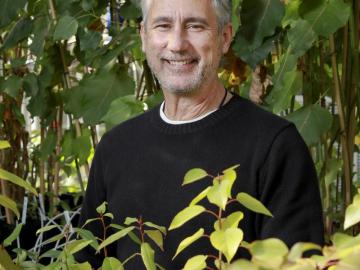
It’s been 10 years since the US Department of Energy first established a BioEnergy Science Center (BESC) at Oak Ridge National Laboratory (ORNL), and researcher Gerald “Jerry” Tuskan has used that time and the lab’s and center’s resources and tools
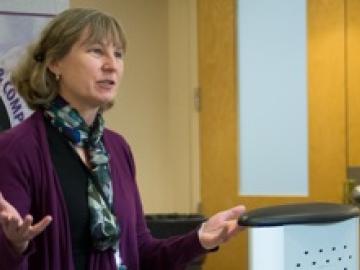
Ecologist Virginia Dale is an ORNL corporate fellow and director of the lab’s Center for BioEnergy Sustainability. In her work she focuses on environmental decision making, plant succession, land-use change, landscape ecology, ecological modeling, sustainability, and bioenergy systems. Dale...
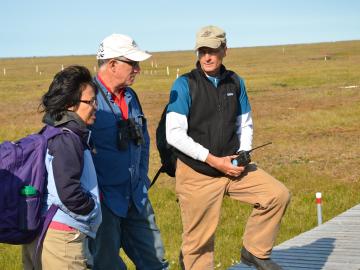
Stan Wullschleger did not intend to stay so long at Oak Ridge National Laboratory, but as many other scientists can relate, time flies when you’re engaged in interesting work. “I don’t know if you can tell while it’s happening or you just notice it in hindsight, but the lab is a wonderful place t...
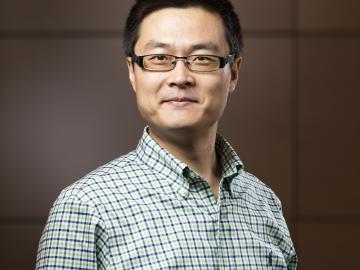
CCSI scientist Jiafu Mao, of the Terrestrial Systems Modeling group in the Environmental Sciences Division, parlayed his interest in physics and mathematics as a student in China into a field of study he has always found interesting
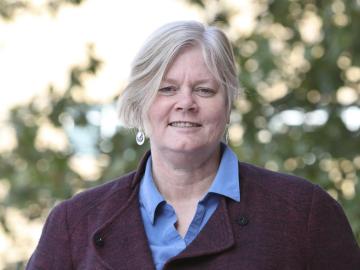
At the confluence of energy and ecology is where Henriette “Yetta” Jager has found her calling. A senior scientist in the Environmental Sciences Division, Yetta uses models to look for win-win opportunities to produce more energy without harming fish and wildlife. Yetta’s research for the US D...

When it’s up and running, the ITER fusion reactor will be very big and very hot, with more than 800 cubic meters of hydrogen plasma reaching 170 million degrees centigrade. The systems that fuel and control it, on the other hand, will be small and very cold. Pellets of frozen gas will be shot int...


From the bluebird painting propped against her office wall and the deer she mentions seeing outside her office window, Linda Lewis might be mistaken for a wildlife biologist at first glance. But rather than trailing animal tracks, Lewis, a researcher at the Department of Energy’s Oak Ridge National Laboratory, is more interested in marks left behind by humans.

With more than 30 patents, James Klett is no stranger to success, but perhaps the Oak Ridge National Laboratory researcher’s most noteworthy achievement didn’t start out so hot – or so it seemed at the time.

Less than 1 percent of Earth’s water is drinkable. Removing salt and other minerals from our biggest available source of water—seawater—may help satisfy a growing global population thirsty for fresh water for drinking, farming, transportation, heating, cooling and industry. But desalination is an energy-intensive process, which concerns those wanting to expand its application.


